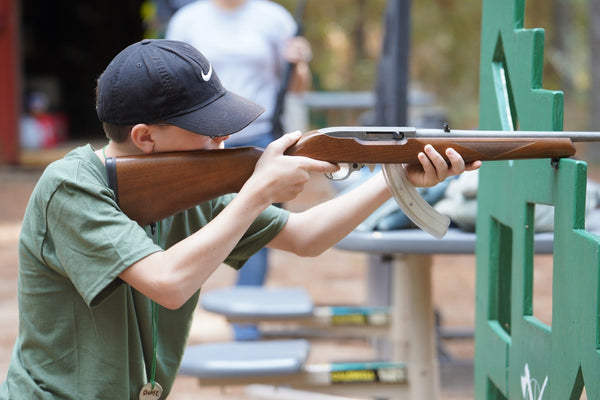5 Essential Items to Take When Evacuating Your Home During a Natural Disaster
Natural disasters can strike with little warning, requiring swift and decisive action. Whether it's a wildfire, hurricane, flood, or earthquake, knowing what to take and how to prepare can make all the difference in ensuring your safety and the well-being of your family. Below are five crucial items to take when evacuating, along with key steps to make your emergency evacuation smoother and more efficient.
1. Important Documents and Identification
In an emergency, access to vital records can be critical for proving identity, handling insurance claims, and re-establishing normalcy after the disaster.
What to Take:
- Passports, driver’s licenses, and Social Security cards
- Birth certificates, marriage certificates, and medical records
- Property deeds, insurance policies, and bank account information
- Emergency contact lists and important phone numbers
Pro Tip: Keep these documents in a waterproof, fire-resistant pouch for added protection.
2. Emergency Go-Bag with Essential Supplies
A well-stocked emergency go-bag ensures you have basic survival items if you must leave in a hurry.
What to Include:
- First aid kit
- Flashlights and extra batteries
- Non-perishable food and bottled water (enough for at least 72 hours)
- Extra clothing and sturdy shoes
- Multi-tool or pocket knife
- Hand-crank or battery-powered radio
Pro Tip: Have a go-bag prepared for each family member, including pets.
3. Medications and Medical Supplies
Leaving without necessary medications can be life-threatening, especially for individuals with chronic conditions.
What to Take:
- Prescription medications (at least a week’s supply if possible)
- Over-the-counter medications (pain relievers, antihistamines, etc.)
- Medical devices (inhalers, glucose monitors, etc.)
- Extra eyeglasses or contact lenses
Pro Tip: Store medications in a sealed, labeled bag, and set reminders to rotate stock to prevent expiration.
4. Cash and Payment Methods
In the aftermath of a disaster, power outages may render credit cards and digital payment options useless.
What to Take:
- Cash in small denominations
- Credit/debit cards
- Prepaid emergency funds or traveler’s checks
Pro Tip: Withdraw cash in advance during storm seasons or other high-risk periods.
5. Electronics and Communication Devices
Staying informed and connected is crucial during an emergency.
What to Take:
- Fully charged phone with charger and power bank
- Laptop or tablet (if necessary for work or communication)
- Walkie-talkies (for areas with poor cell reception)
Pro Tip: Keep a list of emergency contacts saved on your phone and written down as a backup.
How to Plan Ahead for a Safe Evacuation
1. Create a Family Emergency Plan
- Establish a designated meeting point in case family members get separated.
- Assign roles (e.g., who grabs the go-bag, who takes care of pets, etc.).
- Practice evacuation drills at least twice a year.
2. Keep Your Vehicle Ready
- Maintain at least half a tank of gas at all times.
- Keep an emergency kit in the car (water, snacks, flashlight, blanket).
3. Sign Up for Emergency Alerts
- Enable notifications from local authorities and weather services.
- Have a backup communication plan in case cell networks go down.
4. Secure Your Home Before Leaving
- Lock doors and windows.
- Unplug appliances to prevent electrical fires.
- Turn off gas and water if recommended by officials.
5. Stay Informed and Adapt
- Monitor weather updates and emergency broadcasts.
- Be flexible and adjust plans as necessary based on the evolving situation.
By planning ahead and knowing what to take, you can evacuate quickly, efficiently, and with confidence, ensuring the safety of you and your loved ones. Stay prepared and stay safe!
Also in BLOG

7 Reasons the Ruger 10/22 is the Ultimate Starter Rifle (with Pro Tips!)
The most common question received by firearm trainers is "What's the best rifle to start with?" The answer? The Ruger 10/22. This iconic .22 LR semi-automatic rifle is a staple in the shooting community, and for good reason. Whether you're introducing a friend to the sport or looking for a reliable plinker, the 10/22 delivers. Here are seven reasons why it's the perfect choice, each paired with a pro tip to enhance your shooting experience.

Stay Safe on the Road: 7 Warning Signs to Watch for While Traveling with Your Family
Summer road trips should be about adventure, not danger. But traveling through unfamiliar areas can make you a target if you're not aware of your surroundings. Criminals prey on unsuspecting tourists, and the best way to avoid becoming a victim is staying alert and recognizing early warning signs. Here are 7 key red flags to watch for—along with pro tips to keep your family safe on the road.

Lost in the Wild: Avoid These 5 Fatal Mistakes
When you find yourself unexpectedly lost in a survivable wilderness setting, your chances of survival depend as much on your mindset as on your gear. Modern survival experts have seen it all from hikers who panic at the first sign of trouble to those who make impulsive decisions that cost them dearly. Here are the top 5 fatal mistakes people make when lost, and advice to help you avoid them.
